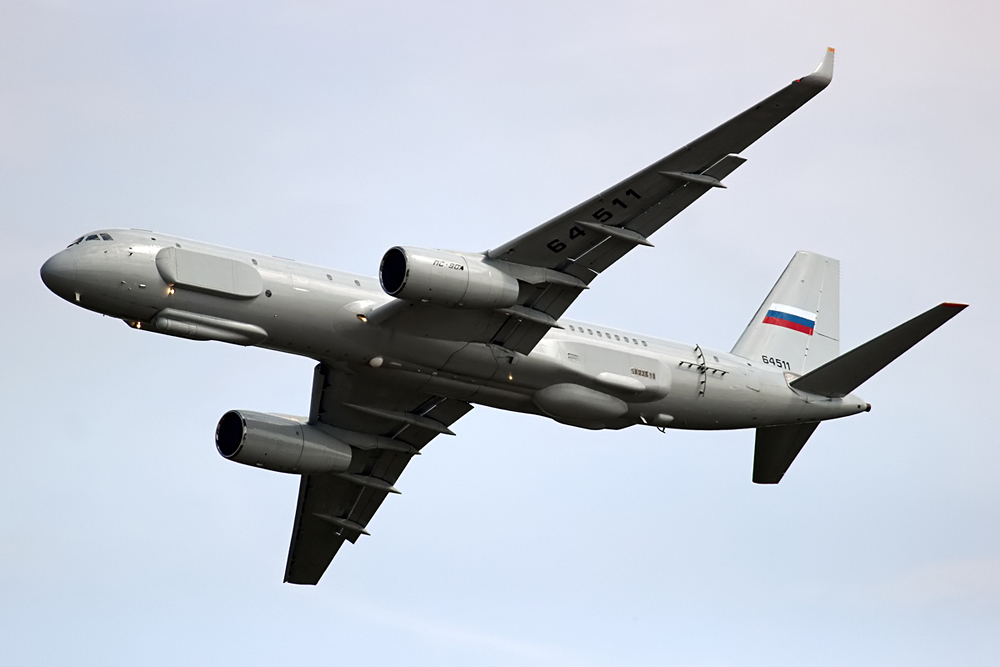Gen next Russian spy plane, Tu-214R, in Syria

Tu-214R.
Rimma SadykovaRussia has deployed its latest, state-of-the-art spy plane in Syria, reports The ‘Aviationist’, blog, citing data provided by the Flightradar24 website.
"On Feb. 15, the Tu-214R registered RA-64514, serial number 42305014, the second of the two examples of this kind of aircraft built under contract with Russia’s Ministry of Defence, flew from Kazan to Latakia airbase, Syria," the blog said.
The route of the aircraft, which can track Turkish military activity hundreds of kilometres away, was available to internet users because of the transponders’ transmitting position, altitude and velocity at a frequency of 1,090 MHz.
The Russian military leadership urgently requires more intelligence and information to understand the situation on the Syrian-Turkish border; particularly whether there is credible evidence of Turkish military preparations for a ground operation in Syria and how the Turkish armed forces are regrouping.
Turkey, on February 3, refused to allow Russia to conduct a surveillance flight over its territory under the Treaty on Open Skies. Russia, in response, deployed the Tu-214R reconnaissance aircraft, which is capable of conducting comprehensive surveillance without crossing the Syrian-Turkish border.
Unlike the Tu-214ON, built specifically for inspection missions under the Open Skies treaty and carrying only photographic equipment on board, the Tu-214R possesses almost super powers to gather intelligence.
Perfect spy
The United Aircraft Corporation (UAC), which manufactures the Tu-214R, has not disclosed its tactical and technical characteristics to RIR, citing the aircraft's increased secrecy regime, but we managed to garner some details from the 2014 annual report of the Vega Radio Engineering Corporation (part of the UAC).
The Tu-214R during the flight. Video by YouTube/ timer tash
The Tu-214R can be distinguished from civilian aircraft by the characteristic bulges under the front and rear fuselage and the teardrop-shaped fairings on the sides of its body, where powerful all-round and side-scanning phased-array radar systems are located.
These radars, included in the MRK-411 multi-frequency radio engineering system, are the eyes and ears of the aircraft. Operators receive information in active and passive (without revealing their location) modes and can intercept the enemy's radio communications.
The main feature of the Tu-214R is its ground-penetrating radar (GPR) scanning. In other words, the aircraft can see beneath the ground. Objects hidden underground, covered with snow or sand, or camouflaged by trees, can be detected by the Tu-214R. It will take a radar snapshot and immediately transmit the information to the command post.
The radio engineering system is complemented by the Fraktsiya electro-optical imaging system, used by the Tu-214R crew to receive real-time, high-precision images of the terrain in the visible and infrared ranges.
The Tu-214Rs (Russia has two of them, according to the register) disturbed the Japan Air Self-Defence Force, which spotted one of them over neutral waters in the Sea of Japan in December 2015. Earlier that summer, the second Tu-214R was sighted near Ukraine’s border.
Delayed project
The Tu-214R spent a lot of time on the factory floor while being designed and built and was the subject of several legal proceedings between the Defence Ministry and the manufacturer, because of repeated delays and failure to meet scheduled delivery dates.
The conflict in Syria accelerated the completion of these winged superspies. Vega's annual report said performance characteristics of the radio engineering system were improved to effectively detect hidden objects, the database of radar images was formed, and a special processing algorithm for decoding and transmitting data on board the aircraft was developed.
Equipped with such powerful hardware, the Tu-214R will operate in concert with the other reconnaissance aircraft of the Russian Aerospace Forces in Syria; the Il-20 and A-50. The Tu-214R will allow the Russian military leadership to receive comprehensive intelligence data in the region in a timely manner, despite the "closed skies" of Turkey.
All rights reserved by Rossiyskaya Gazeta.
Subscribe
to our newsletter!
Get the week's best stories straight to your inbox
